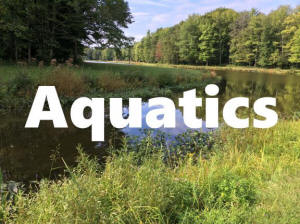

Students are expected to:
1.
Know the processes and phases for each part of the water cycle and understand
the water cycle's role in soil nutrient erosion, salinization of agricultural
lands, and climatic influences.
2.
Understand the concept and components of a watershed and be able to identify
stream orders and watershed boundaries.
3.
Know the features of a healthy watershed and an unhealthy watershed.
4.
Know how to perform and interpret chemical water quality tests and understand
why aquatic organisms and water quality is affected by the physical, chemical
and biological conditions of the water.
5.
Understand the dependence of all organisms on one another and how energy and
matter flow within an aquatic ecosystem.
6.
Understand the concept of carrying capacity for a given aquatic ecosystem, and
be able to discuss how competing water usage may affect the ability of the
system to sustain wildlife, forestry and anthropogenic needs.
7.
Identify common, rare, threatened and endangered aquatic species as well as
Aquatic Nuisance Species (ANS) through the use of a key.
8.
Know how to perform biological water quality monitoring tests and understand why
these tests are used to assess and manage aquatic environments.
9.
Identify common stream organisms and use Pollution Tolerance Indices to evaluate
stream health.
10.
Identify aquatic and wetland environments based on their physical, chemical and
biological characteristics.
11.
Know characteristics of different types of aquifers, and understand historical
trends and threats to groundwater quantity and quality.
12.
Understand societal benefits and ecological functions of wetlands.
13.
Understand the functions and values of riparian zones and be able to identify
riparian zone areas.
14.
Understand how education programs and enforcement agencies are working together
to protect aquatic habitats and preventing those who use our waterways from
inadvertently transporting Aquatic Nuisance Species ANS from one river to
another.
15.
Interpret major provincial and /or federal laws and methods used to protect
water quality (i.e. surface and ground water). Utilize this information to
propose management decisions that would improve the quality of water in a given
situation.
16.
Be familiar with the Federal, Provincial and state agencies that provide
oversight of water resources, and understand that Geographic Information Systems
(GIS) is a useful and important tool in the management of water resources.
17.
Identify global and local sources of point and non-point source pollution and be
able to discuss methods to reduce point and non-point source pollution.
18.
Understand the interaction of competing uses of water for water supply,
hydropower, navigation, wildlife, recreation, waste assimilation, irrigation,
and industry.
19.
Know the meaning of water conservation, and understand why it is important every
time you turn on a faucet.
(Adapted from 2015 Cannon National Envirothon Website - Aquatics Competition
Key Points)
The study references listed are not an exhaustive list of sources from which
test questions are drawn. Students are expected to research other sources
for more information according to the learning objectives.
Nonpoint Source Pollution basics:
https://nepis.epa.gov/Exe/ZyPDF.cgi/200049A9.PDF?Dockey=200049A9.PDF
Water Cycle basics:
https://water.usgs.gov/edu/graphics/watercycle-usgs.pdf
What is a watershed:
https://water.usgs.gov/edu/watershed.html
Nutrient Pollution basics:
https://www.epa.gov/nutrientpollution
Water Use basics:
https://water.usgs.gov/edu/wateruse.html
Ohio’s aquatic invasive species:
Stream Order Explanation
https://docs.wixstatic.com/ugd/19e2af_a46710d357b248169893f227a68de4ed.pdf
Ohio Sediment Stick Instructions
https://docs.wixstatic.com/ugd/19e2af_49d904f0d11b42d6a6abde0470a39d43.pdf
Stream Quality Monitoring Assessment Form
https://docs.wixstatic.com/ugd/19e2af_af0720d23d5b41339ae653c19622bf9e.pdf
Aquatic Macroinvertebrates key
https://docs.wixstatic.com/ugd/19e2af_195e491d3fd24ce3b518ef08205228dd.pdf
Macroinvertebrates key
https://docs.wixstatic.com/ugd/19e2af_ab4935e9ac5f4d5abdfd0f7507cac1e5.pdf
River Life
https://docs.wixstatic.com/ugd/19e2af_ebde24e0c7ca488ea6bf94aa94a7c3a1.pdf
Native Trees for planting alongside scenic rivers
https://docs.wixstatic.com/ugd/19e2af_934d025960a743c6bb2987ae13cbccbe.pdf
a big thanks to Butler SWCD for putting together these resources
back to resources page